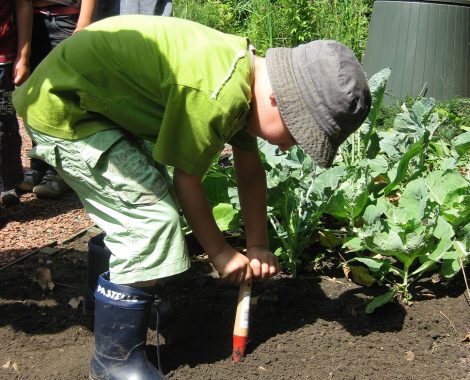Get outdoors and have fun with family gardening
Growing vegetables can be a way of encouraging kids to eat the green stuff.

Picture: iStock

Picture: iStock
Subscribe to continue reading this article
and support trusted South African journalism
 SUBSCRIBE
SUBSCRIBE
Parents who are running out of ideas for keeping kids busy during the extended school holidays can turn to nature for some help.
This is prime seed-sowing season for winter and spring flowers as well as for some vegetables, says Marlaen Straathof of Kirchhoffs Seeds.
“What better way to get the kids out of doors into the sunshine, be part of nature and enjoy getting legitimately dirty.”
The easiest flowers to grow are Namaqualand daisies, nasturtiums, Iceland poppies, calendula, alyssum, snapdragons and Virginian stocks.There are also scatter packs with a mix of indigenous flowers that bloom at different times.
Vegetables that can still be sown are carrots, beetroot, onions, radish, lettuce, Swiss chard and peas.
Start with an excursion to the garden centre to choose the flower and vegetable seed. Quick-growing Virginian stocks are a good choice for children to grow, as well as Namaqualand daisies, nasturtiums, and calendula.

Picture: Pixabay
All the garden centres are open for business. To get started you will also need compost, a liquid fertiliser and garden equipment, such as a rake, watering can, fork, spade, and trowel.
If your garden implements are worn, why not upgrade at the same time with some bright and colourful new items.
Start by identifying an area in the garden where you can sow the seed or consider pots if the garden doesn’t get enough sun. Sun-loving annuals need at least six hours of sun to grow and flower well.
If the soil is hard, water it and leave overnight. Dig over the area, mixing in compost and then rake it level. Everyone can take turns at raking.
The easiest way to sow a mass of flowers is to scatter the seed. For an even spread, mix the seed with mealie meal. Cover with a light layer of soil, firm down and water.
One way to firm down the soil is to roll a plastic pipe over the soil. This gets rid of any air pockets between the seed and the soil. Water regularly, especially while the seed is germinating.
Straathof’s advice is not to weed the bed until you can see quite clearly which are weeds and which are the flowers.

Picture: Pixabay
Nasturtium seeds are bigger, which means they can be sown individually in small holes. Follow the instructions on the seed packet for the correct soil depth.
The leaves and flowers are edible although peppery in flavour. They produce a blaze of colour and the flowers have a fresh, almost astringent fragrance. They can be picked and made into tiny bouquets.
Calendula is another cheerful winter flower with large yellow or orange daisy-like flowers that are edible. It has a high germination rate so a single packet of seed may even last for more than one season. Sow seed individually about 15cm apart and keep the soil moist during germination.
Growing vegetables can be a way of encouraging kids to eat the green stuff. A great veggie to start with is garden peas, which can still be sown in most areas, except very cold highveld gardens.
They are winter’s sweetest taste and the kids will love picking and eating the peas straight from the bush. Bush peas are probably easier to grow because they don’t need trellising.
The soil must just be well dug over with plenty of compost mixed in. Sow seed about 3-4cm deep and about 5cm apart. Keep the soil moist until the seed germinates, which takes two to three weeks
For more information visit www.kirchhoffs.co.za
For more news your way, download The Citizen’s app for iOS and Android.
Access to the top content, vouchers and other member only benefits